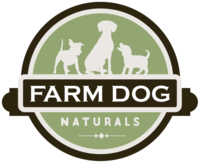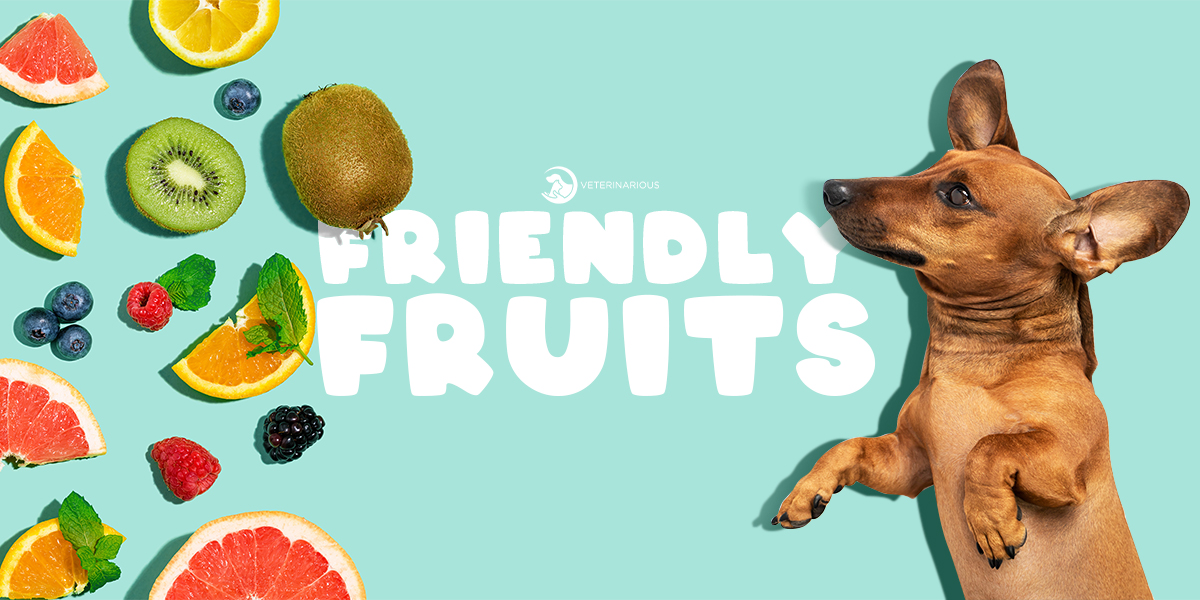Who doesn’t love a nice fruit salad? A big bowl of fresh fruit, mixed up so you get a good blend of sweet and tart. Berries, citrus fruits, even fancy tropical fruits like pineapple or mango…
But is it safe to share that sweet treat with your dog?
Today we’re working through the list of friendly fruits for dogs – the ones we love to switch in every so often for all the health benefits and the variety.
Top 10 Fruits for Dogs
Dogs can eat many different kinds of fruit, so long as they’re served on occasion and in moderate amounts. Many dogs enjoy snacking on healthy, fruity treats between meals. Still, you should only let them indulge from time to time to avoid the risk of adverse side effects.
So, what are some of the best fruits to feed dogs?
- Apples – Chock-full of vitamin C, calcium, phosphorus, and dietary fiber. They’re also a good source of prebiotics (so they feed probiotics). Apple seeds do contain very, very small amounts of cyanide (not enough to harm your dog), so if you’re worried about that don’t feed the core.
- Berries – Blueberries, raspberries, strawberries, and blackberries are all good choices when it comes to fruits for dogs. They’re loaded with vitamin C, phytonutrients, fiber, and most importantly, antioxidants. They help strengthen your dog’s immune system and slow the aging process by fighting free radicals.
- Pears – Fiber, copper, vitamin C, vitamin K, all make pears a good option. They are also relatively mild, and most dogs don’t mind the taste, even if they’re picky about other fruits.
- Bananas – Bananas are rich in potassium, biotin, vitamins, magnesium, and fiber. The fiber content make them a good choice if your pet has digestive upset. They’re gentle and easy to digest. Magnesium promotes bone growth and can help the body produce protein and absorb vitamins.
- Pineapple – Pineapples are a great source of vitamin C and B6, riboflavin, thiamin, niacin, and folate. Make sure that you also remove the tough core. It has the potential to cause an obstruction, so make sure it’s gone before offering it.
- Kiwi – These little green bundles of sweetness are full of vitamin C, K,E, folate, and potassium. Like berries, they also have those valuable antioxidants. Remove the skin and seeds though – they’re not super digestible for dogs.
- Mango – Rich in vitamins A, C, E, and K, B6, folate, riboflavin and choline and minerals like iron, potassium, calcium, phosphorus, sodium, copper, zinc, and selenium. Plus it has antioxidants, carotenoids, and polyphenols. Just be sure to peel it and remove the stone before serving.
- Oranges – Oranges, as well as it’s citrusy cousin grapefruit, is good for dogs. Many dogs like oranges (although admittedly fewer will go for a segment of grapefruit), and are happy to share, peel off.
- Coconut – Another tropical item on the list! Packed inside a coconuts shell are valuable medium-chain triglycerides, which are a great source of energy. It also has powerful anti-inflammatory properties that can help with many conditions, including skin allergies, inflammatory bowel disease (IBD), and arthritis.
- Cantaloupe – Canteloupes are an excellent source of dietary fiber, vitamin B6, niacin, folate, vitamin A, vitamin C, and potassium. The seeds are harmless but be sure to remove the outer shell as it can cause digestive issues.
Are there any fruits to avoid?
Grapes are a no-go (and raisins, obviously). Stay away from dried fruits, or processed/canned fruit. With dried fruits, the water is removed, and sugars get concentrated, making them really high in sugar. Dried fruits can also contain chemical compounds that are potentially toxic.
Also, be careful with fruits with pits (peaches, cherries, plums, etc.) The flesh is good – but not the pit.
Best Ways to Feed Fruit
First off – while many fruits for dogs are safe – really healthy in fact – you don’t want to overdo it. Fruits and vegetables should only make up about 10% of your dog’s diet in total. But fruits tend to be higher in sugar than vegetables, so make sure that you’re feeding in moderation. We like to add a variety of fruits on a rotating basis, a couple times a week.
Next, how do you feed them? There are so many ways. We keep a bag of organic blueberries in the freezer and put a handful on our dogs’ dinner once or twice a week. And that’s and easy way – if you’re eating a piece of fruit, share a bite or two with your canine pal.
Other easy ways to feed fruits for dogs include making a fresh fruit and veggie smoothie. You can either pour a few tablespoons on your dog’s breakfast or freeze it in ice cube trays and serve a section as a sweet frozen treat.
No matter how you slice it, there are lots of fruits for dogs that help to add variety and beneficial vitamins and minerals to your pet’s diet! Don’t be afraid of these friendly fruits – they’re great!

